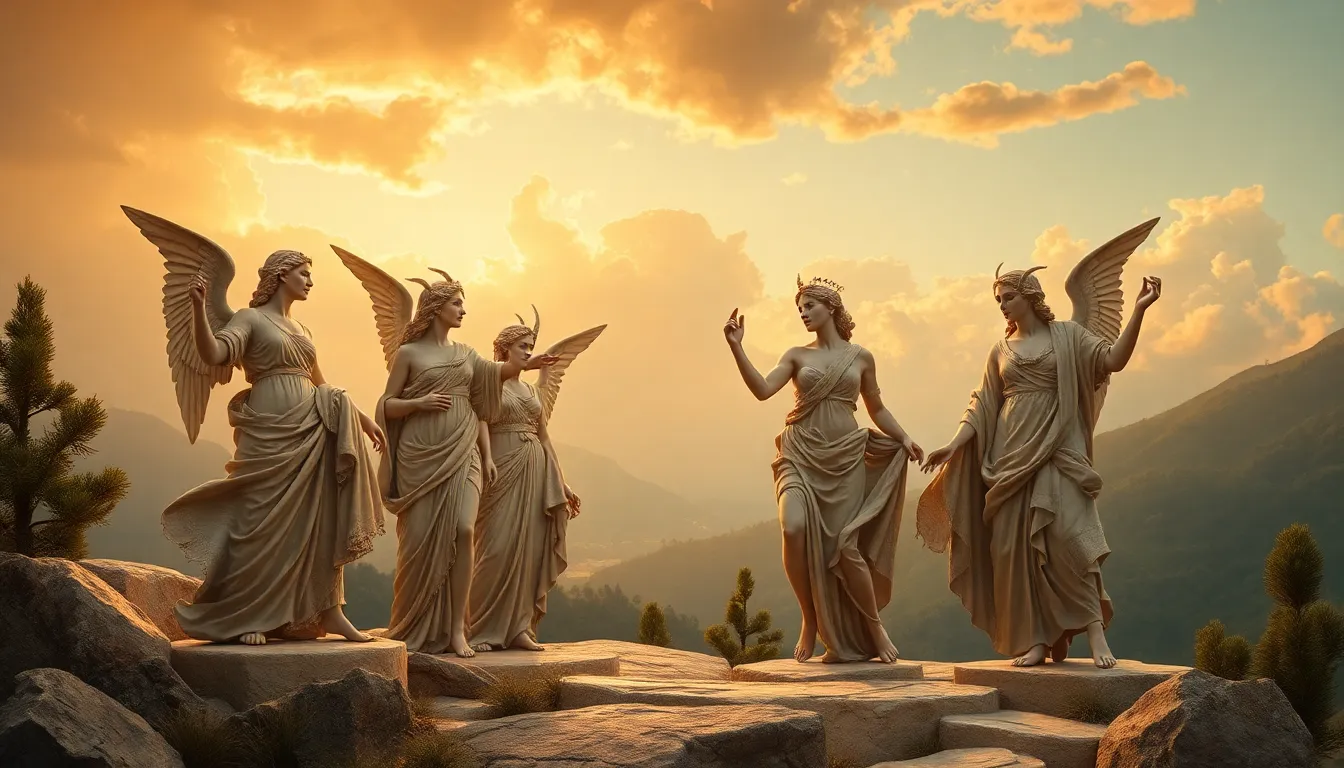The Muses and Their Influence on the Art of Memoir Writing
I. Introduction to Memoir Writing
Memoir writing is a unique literary form that focuses on the author’s personal experiences and reflections. Unlike autobiographies, which cover a person’s entire life, memoirs delve into specific moments or themes, providing insight into the author’s thoughts and emotions. This genre holds significant value as it offers readers a window into the human experience, fostering empathy and understanding.
Central to the art of writing is the concept of the muse, a source of inspiration that has been revered in art and literature for centuries. In Greek mythology, the Muses are goddesses who preside over the arts and sciences, inspiring creativity in those who seek their influence. This article aims to explore the profound connection between these mythical figures and the craft of memoir writing.
II. The Historical Context of the Muses
The origins of the Muses can be traced back to ancient Greek mythology, where they were considered the divine goddesses of inspiration, each responsible for different artistic and intellectual pursuits. Traditionally, there are nine Muses, including Calliope, the muse of epic poetry, and Clio, the muse of history. Their presence was believed to ignite creativity and enhance the artistic process.
Throughout history, the Muses have played a crucial role in inspiring creativity across various art forms, including poetry, music, and visual arts. The evolution of the muse concept has seen it transition into a more personal interpretation in literature, particularly in memoir writing, where authors often draw inspiration from their life experiences and the relationships that shape them.
III. Identifying the Muses of Memoir Writers
Memoir writers often find their muses in various aspects of their lives. Some common sources of inspiration include:
- Personal Experiences: Significant events, challenges, and triumphs in a writer’s life often become the focal points of their memoirs.
- Relationships: Influential figures such as family members, mentors, or friends can serve as muses, shaping the themes and narratives within memoirs.
- Nature and Environment: The settings in which writers find themselves can also inspire creativity, affecting their writing style and emotional tone.
IV. The Psychological Impact of Muses on Writing
The role of muses in the creative process is multifaceted. They can:
- Enhance emotional expression, allowing writers to convey their feelings authentically in memoirs.
- Provide motivation and direction, helping authors to clarify their thoughts and focus on their narratives.
- Help in overcoming writer’s block by serving as a reminder of what is meaningful to the writer.
V. Case Studies of Notable Memoirists and Their Muses
Many renowned memoirists have drawn inspiration from their muses, shaping their writing styles and themes. For example:
- Mary Karr: In her memoirs, Karr often reflects on her tumultuous childhood and the influence of her family dynamics, which serve as a significant source of inspiration.
- Cheryl Strayed: Her memoir “Wild” is heavily influenced by her personal journey through grief and self-discovery, showcasing how her experiences became her muse.
- Frank McCourt: In “Angela’s Ashes,” McCourt draws from his impoverished upbringing in Limerick, using his past as a powerful muse that informs his narrative voice.
VI. Practical Techniques for Writers to Harness Their Muses
Writers can employ several strategies to identify and cultivate their muses:
- Journaling: Keeping a daily journal can help writers reflect on their experiences and recognize recurring themes that may serve as inspiration.
- Mind Mapping: Creating a visual representation of thoughts and ideas can help writers explore connections between their life experiences and potential narratives.
- Nature Walks: Spending time in nature can spark creativity and provide clarity, allowing writers to connect with their muses in a serene environment.
VII. The Challenges of Writing with Muses
While writing with the guidance of muses can be enriching, it also presents challenges:
- Navigating Complex Narratives: Writers may struggle to weave together multifaceted stories influenced by various muses.
- Risk of Idealization: There is a tendency to idealize or mythologize figures in memoirs, which can lead to a distorted representation of reality.
- Balancing Authenticity and Inspiration: Writers must strive to maintain authenticity while allowing the influence of their muses to enhance their storytelling.
VIII. Conclusion: Celebrating the Influence of Muses in Memoir Writing
In conclusion, the relationship between muses and memoirists is profound and enduring. The muses serve as vital sources of inspiration, guiding writers through their creative journeys and enriching their narratives. By embracing their muses, writers can craft memoirs that resonate deeply with readers, offering insight and reflection on the human experience.
As you embark on your own writing endeavors, consider the muses in your life. Embrace the experiences, relationships, and environments that inspire you, and let them guide your pen. The art of memoir writing is not just about recounting events; it is about celebrating the journey and the muses that illuminate the path.




